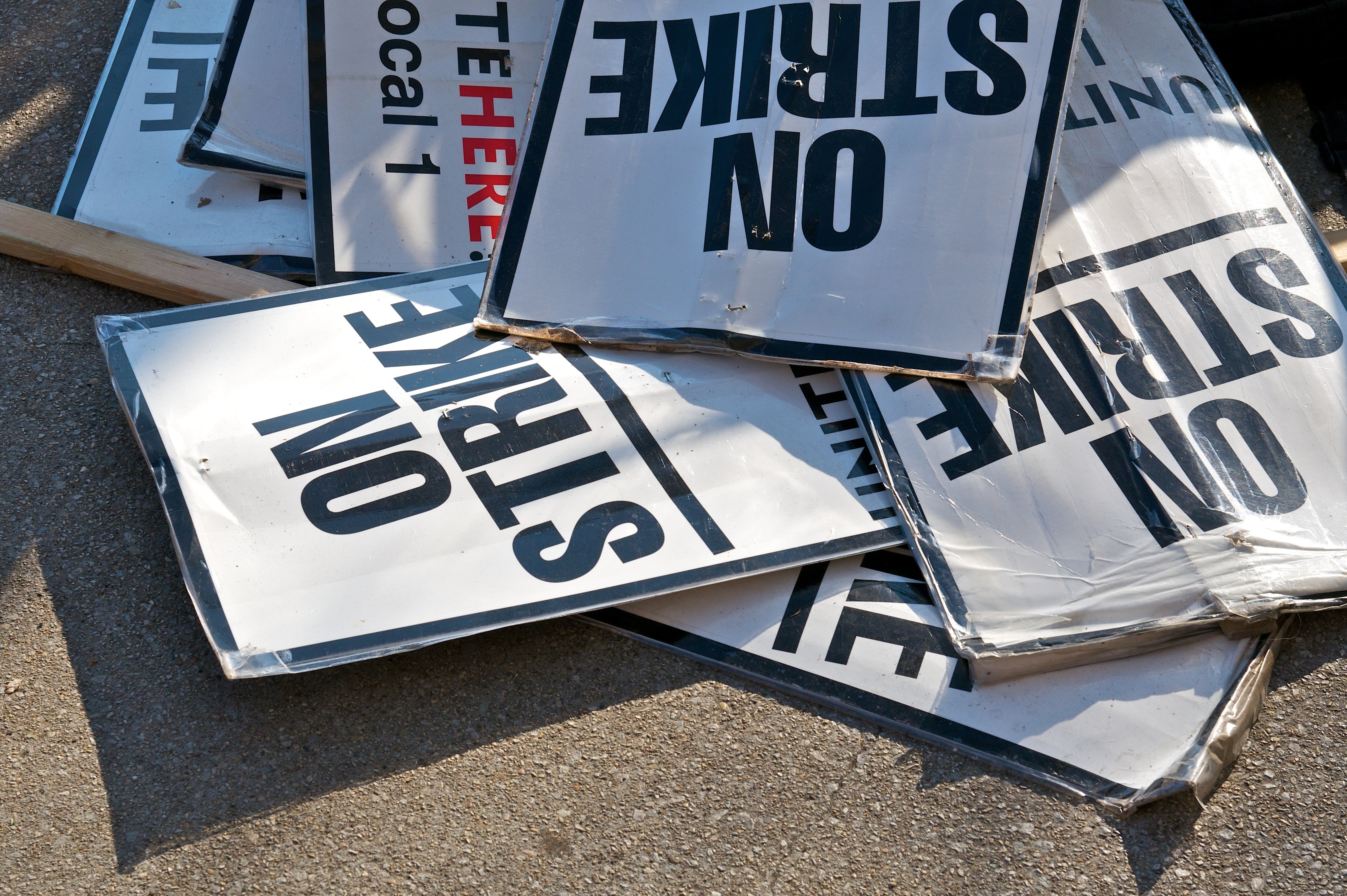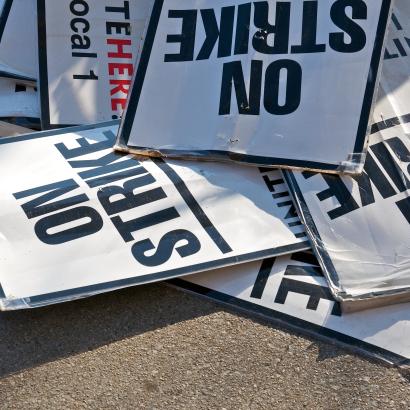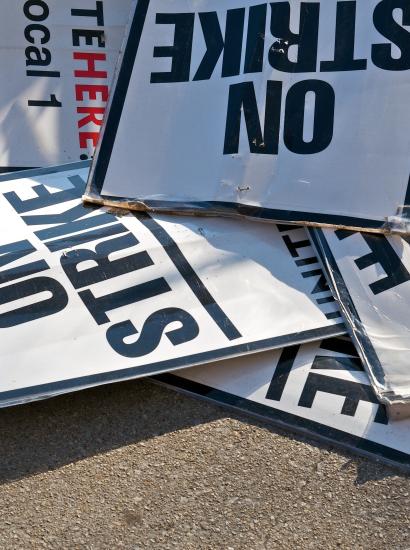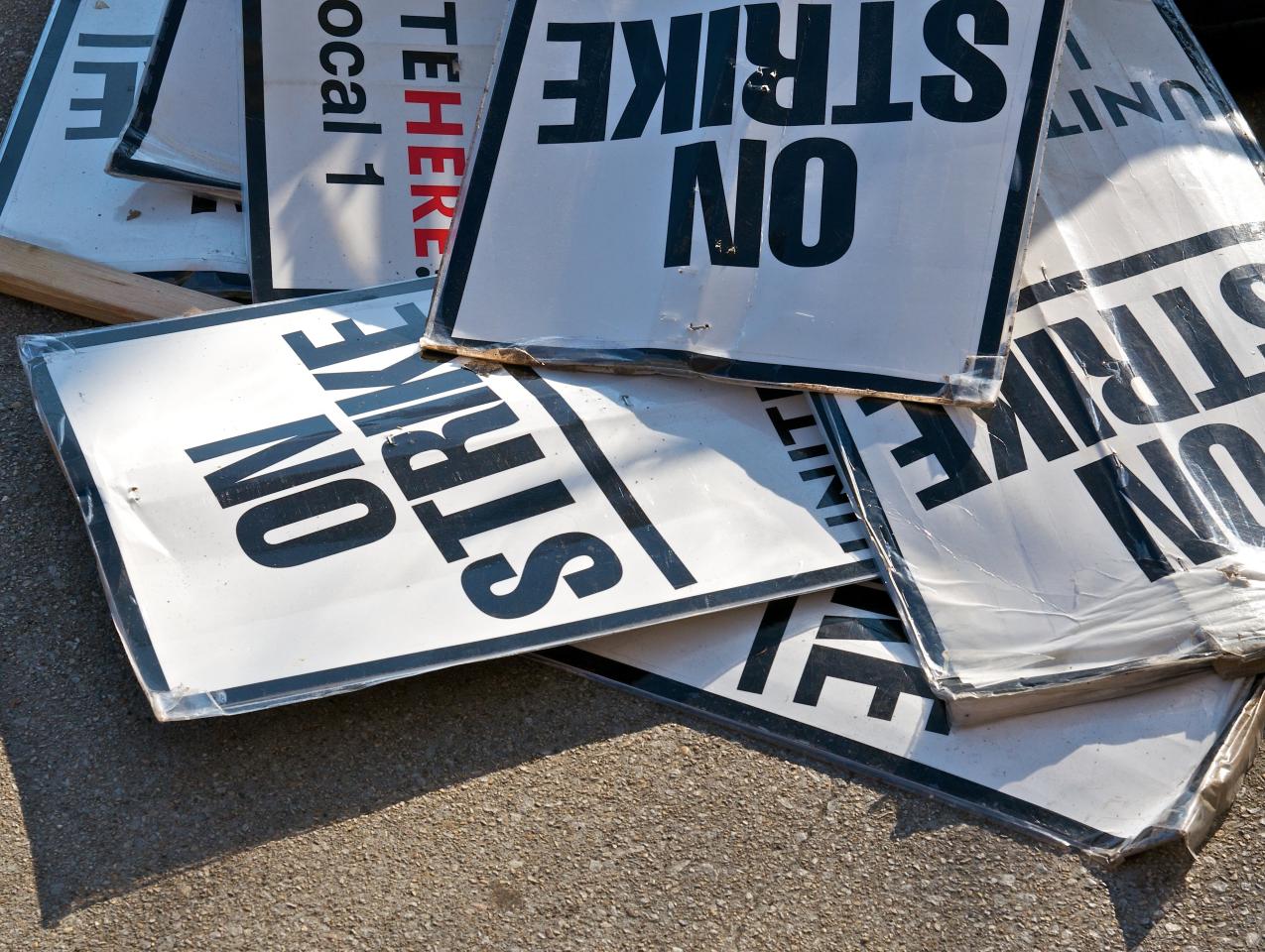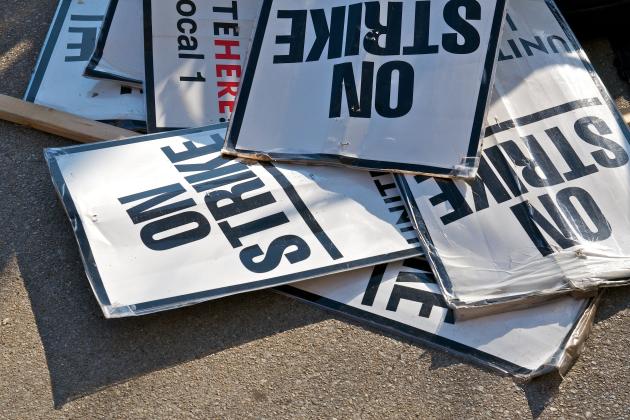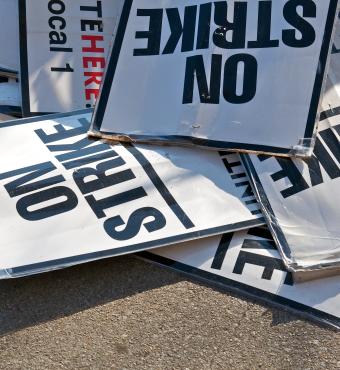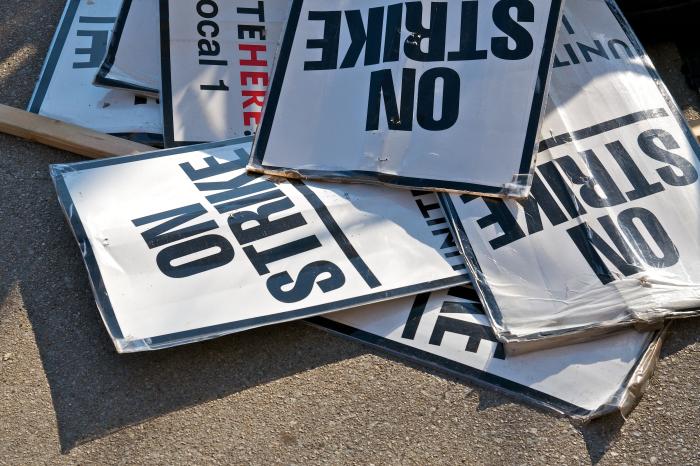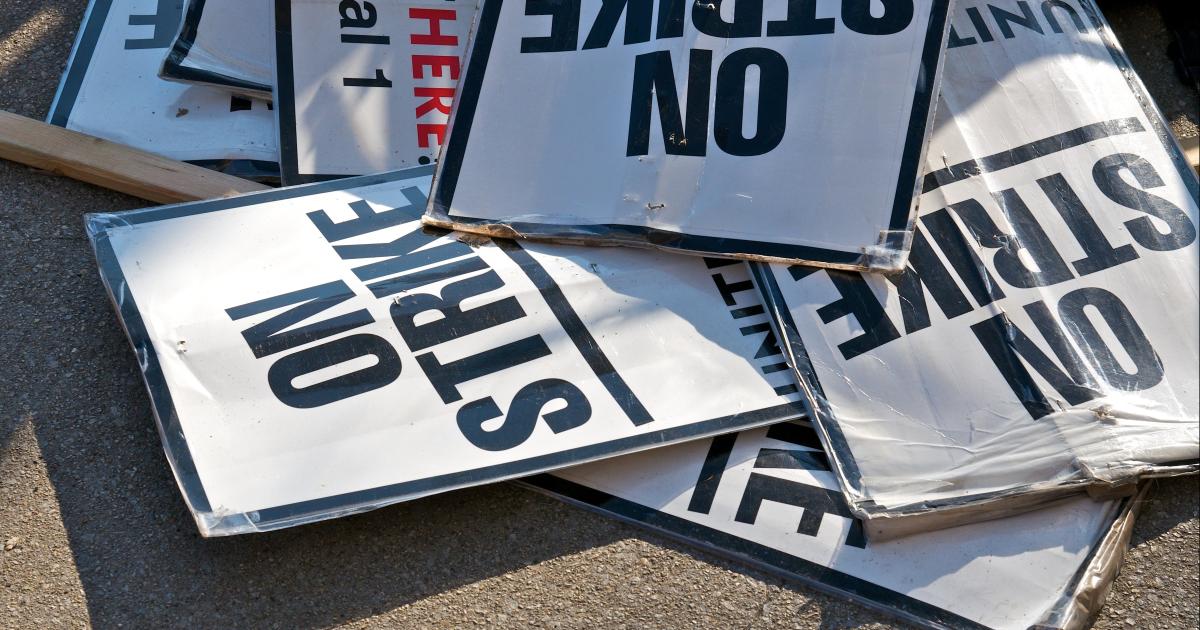- Economics
- US Labor Market
At the stroke of midnight on Friday, September 15, to no one’s surprise, the United Auto Workers union, led by its hawkish new president, Shawn Fain, called for strike action at all three of the major traditional American automotive companies: Ford, General Motors, and Stellantis (the owner of Chrysler through merger). The workers have gone on strike to secure major wage gains and other concessions from the three companies, all of which have made offers that contain some major contract improvements. There had already been movement on both sides, so that on the eve of the strike, the basic wage rate increase that the companies had offered moved to 20 percent over the life of the four-and-a-half-year contact, while the union had come down from over 36 percent. The union also wanted to end the tiered system of employment that pays new workers substantially less than senior employees, and reached for a major change: getting five days’ pay for a four-day work week. There are always myriad other demands involving collateral issues characteristic of virtually every collective-bargaining agreement.
Against this backdrop, Fain takes a very simple view: “The money is there. The cause is righteous. The world is watching.” His basic argument is that it is galling for union workers to see GM CEO Mary Barra pull down some $29 million in 2022, a 40 percent wage increase over the past four years, while worker pay has gone up only 6 percent during that same period. Indeed, relative to inflation, the hourly wages for autoworkers in both the union and nonunion sector have dropped by close to 20 percent since 2008, as the worker concessions made in the 2008 bailout have never been restored. At the same time, the profits of the Big Three companies—Ford, General Motors, and Stellantis—totaled over $250 billion, with anticipated profits in 2023 of more than $32 billion. It should therefore be no surprise that President Biden has announced in no uncertain terms that he strongly supports this (and every other) union venture, on the grounds that workers “deserve a fair share of the benefits that they helped to create.” So, Fain has a field day with his refrain that this fight with his dreaded adversary “boils down to one thing: it’s corporate greed.”
The pity of the matter is that Fain is wrong, perhaps disastrously so. His first mistake is to assume that the most relevant fact is that since the companies have a barrel-full of cash stashed in their bank accounts, they should be willing to offer the “fair deals” that Biden has endorsed. But he cannot make the term operational. Suppose your uncle has one million dollars in his bank account, and is therefore asked to pay more for groceries than the ordinary chap who only has $1,000. Look around the food markets in the United States and notice that they offer only a single (competitive) price to all their customers and do not ask customers for income tax returns before setting their prices. Why? In competitive markets, no price discrimination is possible, because if one provider adopts this strategy of poking into the affairs of his customers, they will all flee to some rival.
And so too here. The nonunion worker in a competitive market has not been able to secure wage increases either. Since these other, nonunion firms remain constant rivals to the UAW’s Big Three, Fain faces the real problem that his efforts to boost wages because the money is there are likely to fail because if the prices of Big Three cars go up, the decline in demand is likely to lead to lower sales and profits, which could easily eat into the Big Three’s cash reserves.
What Fain does not grasp is that the automobile executives will enter into a deal with the UAW only if makes them better off than with the strike they would otherwise have to face. Thus, any deal that costs them accumulated capital without generating offsetting profits is simply off the table. And as for the very real wage decline since 2008, neither union nor nonunion shops managed to push wages up because the demand was just not there. It was never quite clear why the wage stagnated, but if new and improved tools, equipment, and protocols explain increases in productivity, the workers will not get a portion of any gain generated by these factors of production even in a union firm. No exercise of labor monopoly power through the collective bargaining system will induce management to enter into a deal that results in a net loss—period.
Moreover, nothing says the profits gained today will be there tomorrow. The unions are deeply concerned about the government-mandated shift to electric vehicles, which they fear, rightly, will reduce the number of workers needed to make cars. But note the cause. These cars, even with the ample government subsidies proudly announced by the Biden administration, continue to cost the companies gobs of money on each sale. Additional mandates from the federal government and progressive states like California ramp up the number of EVs in production, as the White House proudly yet ironically proclaims, increasing firms’ investments in EVs. But these are bad investments that will not translate into future profits, so that the Big Three and every other industry participant will have to make up the losses on EVs with large markups on pickup trucks and SUVs. Yet these profit positions will quickly turn to a loss as wage increases raise costs and reduce revenues. The current cash surpluses will dwindle.
Put otherwise, EVs are a lose-lose proposition for management and labor alike, so no set of transfer payments between them can allow the automobile industry to maintain its current levels of profitability.
The UAW, of course, senses that grim fate for EVs, which is why to date it has withheld endorsing Biden for the 2024 presidential election. As on so many issues, management and labor are on the same side here. Both are wrong when they collude to keep foreign cars from entering the market. And both are right when they seek to fight the massive environmental EV initiative that has so transfixed the president.
Notwithstanding all these fundamental problems with the UAW position, Fain seems to think that he has found an optimal bargaining strategy that will give his union additional leverage. The UAW has never attempted to strike all three companies at the same time, so its novel program will be to conduct selective strikes at key plants of all three automakers simultaneously. This is a thinly disguised effort to cause maximum disruption at minimum cost to the union, with its $825 million strike fund, which has potentially to cover the nearly 150,000 striking workers. But this strategy could easily blow up in the union’s face. If the selective shutdowns make it impossible to operate the other plants profitably, the firms will exercise one of their weapons in an economic strike: they will lock out the workers from the other plants, which will in turn cause them relatively little harm since the plants are already idled, while placing substantial new strains on the union strike fund. The fund amounts to roughly $5,500 per person, a sum that could last, say, about two or three months before it is exhausted.
The best prediction is that Fain’s miscalculations will cost both sides dearly. But that is to be expected because the entire premise of unionization is wrong. It assumes that pitting organized labor against a united front of automakers is the way to ensure effective bargaining power between the two sides that will give labor the needed equalizer in negotiations. But that is not what happens. Unlike in a competitive market, in which many workers and firms operate independently, collective bargaining creates the possibility that at any contract renewal time, the large gap between what is asked and what is offered will create a massive holdout situation. Thus, it is likely that both sides will lose wages and revenues, respectively, that can never be fully recouped, while for the duration of the strike, and even afterwards, the public at large suffers higher prices and slower deliveries for new automobiles—a trifecta of losses that no bold rhetoric by labor or management can undo. A return to competitive markets, by scrapping the entire collective bargaining system, allows for incremental adjustments on multiple fronts, without those massive discontinuities from which everybody loses. It should happen, but sadly, it won’t.







